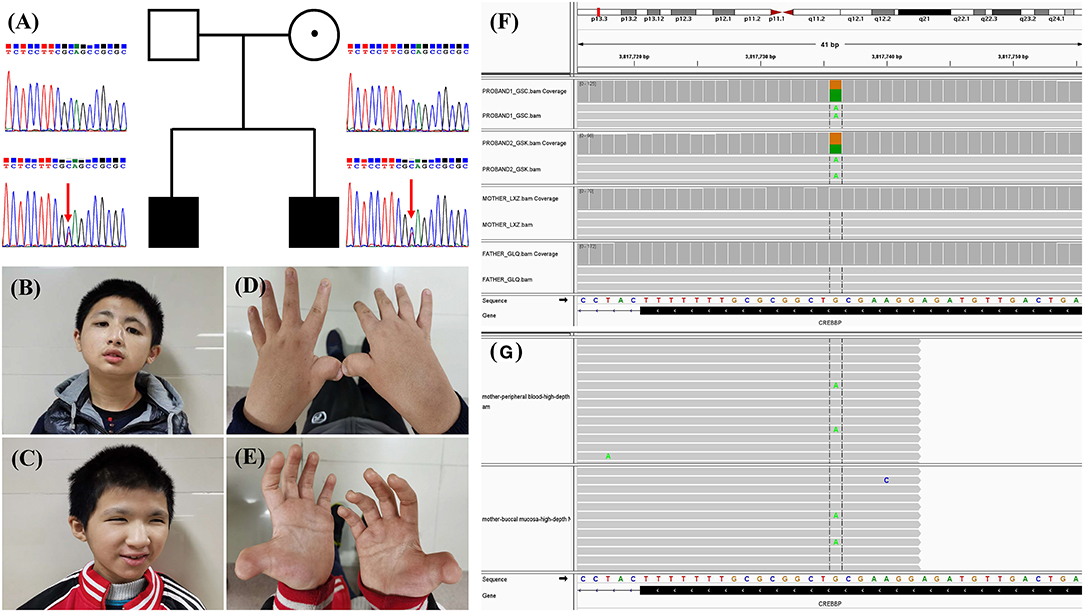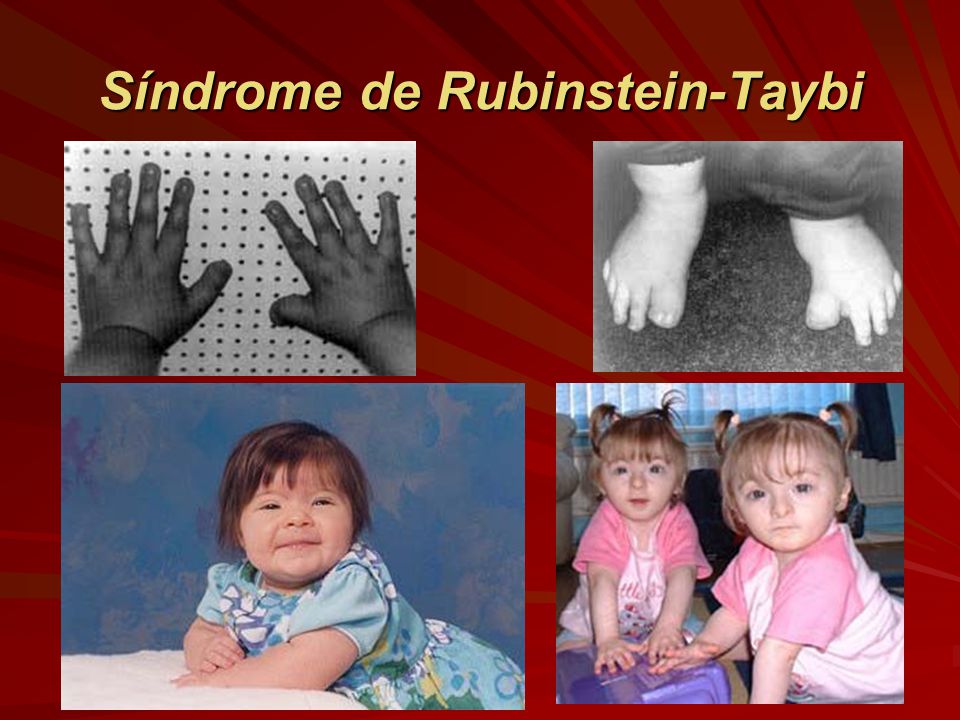Rubinstein-Taybi syndrome: clinical features, genetic basis
Por um escritor misterioso
Last updated 25 dezembro 2024

Background Rubinstein-Taybi syndrome (RSTS) is an extremely rare autosomal dominant genetic disease, with an estimated prevalence of one case per 125,000 live births. RSTS is characterized by typical facial features, microcephaly, broad thumbs and first toes, intellectual disability, and postnatal growth retardation. However, no standard diagnostic criteria are available for RSTS. In this review, we summarized the clinical features and genetic basis of RSTS and highlighted areas for future studies on an appropriate diagnostic protocol and follow-up care for RSTS. Discussion RSTS is primarily characterized by delayed growth in height and weight, microcephaly, dysmorphic facial features, and broad thumbs and big toe. Over 90% RSTS individuals with disabilities survive to adulthood, but healthcare for these patients is particularly complex, time-consuming, and costly. In addition, no standard diagnostic criteria and follow-up care guidelines are available for RSTS. It has been shown that mutations in the genes encoding the cyclic-AMP-regulated enhancer binding protein (CREBBP) and the E1A-binding protein p300 (EP300) contributed to the development of RSTS. Therefore, genetic tests are useful for the diagnosis of RSTS, although most RSTS cases are currently diagnosed based on clinical features. Summary The clinical features of RSTS have been extensively studied, which significantly contributes to the diagnosis of this extremely rare syndrome. However, the pathogenesis and genotype-phenotype associations of RSTS are largely unknown. Therefore, multicenter studies and international cooperation are highlighted for better understanding of this disease, establishing standard diagnostic criteria, and providing professional management and follow-up care of RSTS.

Rubinstein–Taybi syndrome European Journal of Human Genetics

Ultra-Rare Syndromes: The Example of Rubinstein-Taybi Syndrome

Frontiers Genetic Diagnosis of Rubinstein–Taybi Syndrome With

Frontiers Case Report: Low-Level Maternal Mosaicism of a Novel

Rubinstein-Taybi syndrome: clinical features, genetic basis

Novel heterozygous variants in the EP300 gene cause Rubinstein

Rubinstein-Taybi Syndrome

Cureus Rubinstein-Taybi Syndrome Associated with Pituitary

PDF) Rubinstein-Taybi syndrome: Clinical features, genetic basis

Genes, Free Full-Text

High frequency of copy number imbalances in Rubinstein–Taybi

Rubinstein–Taybi Syndrome in a Filipino Infant with a Novel CREBBP

Rubinstein–Taybi syndrome - Wikipedia
Recomendado para você
-
 Rubinstein–Taybi syndrome - Wikipedia25 dezembro 2024
Rubinstein–Taybi syndrome - Wikipedia25 dezembro 2024 -
 Forgotten Diseases Research Foundation25 dezembro 2024
Forgotten Diseases Research Foundation25 dezembro 2024 -
 Born with Rubinstein-Taybi Syndrome (RTS), Braxton and Family are25 dezembro 2024
Born with Rubinstein-Taybi Syndrome (RTS), Braxton and Family are25 dezembro 2024 -
 Síndrome de Rubinstein-Taybi25 dezembro 2024
Síndrome de Rubinstein-Taybi25 dezembro 2024 -
 Síndrome de Rubinstein-Taybi - Dra. Deborah Kerches25 dezembro 2024
Síndrome de Rubinstein-Taybi - Dra. Deborah Kerches25 dezembro 2024 -
 Guapimirim News: CRIANÇAS ESPECIAIS 12 - Síndrome de Rubinstein-Taybi25 dezembro 2024
Guapimirim News: CRIANÇAS ESPECIAIS 12 - Síndrome de Rubinstein-Taybi25 dezembro 2024 -
 Lucía, la niña del 'síndrome de los pulgares anchos' y la sonrisa contagiosa25 dezembro 2024
Lucía, la niña del 'síndrome de los pulgares anchos' y la sonrisa contagiosa25 dezembro 2024 -
 Síndrome de Cornelia de Lange Síndrome Cri du chat Síndrome de Rubinstein – Taybi25 dezembro 2024
Síndrome de Cornelia de Lange Síndrome Cri du chat Síndrome de Rubinstein – Taybi25 dezembro 2024 -
 PDF) Genetic heterogeneity in Rubinstein-Taybi syndrome: Delineation of the phenotype of the first patients carrying mutations in EP30025 dezembro 2024
PDF) Genetic heterogeneity in Rubinstein-Taybi syndrome: Delineation of the phenotype of the first patients carrying mutations in EP30025 dezembro 2024 -
 Rubinstein–Taybi syndrome: clinical and molecular overview, Expert Reviews in Molecular Medicine25 dezembro 2024
Rubinstein–Taybi syndrome: clinical and molecular overview, Expert Reviews in Molecular Medicine25 dezembro 2024
você pode gostar
-
 Call Of Duty Gaming Channel Name Ideas 202325 dezembro 2024
Call Of Duty Gaming Channel Name Ideas 202325 dezembro 2024 -
 Truck Volvo FMX 460 8x4 Stetter 9 cbm Wechselsystem, 57500 EUR - Truck1 ID - 565724125 dezembro 2024
Truck Volvo FMX 460 8x4 Stetter 9 cbm Wechselsystem, 57500 EUR - Truck1 ID - 565724125 dezembro 2024 -
 Do It Yourself!! - Ending Tsuzuku Hanashi25 dezembro 2024
Do It Yourself!! - Ending Tsuzuku Hanashi25 dezembro 2024 -
VIP - Roblox25 dezembro 2024
-
 New Roblox “Hungry Orca hat. (Is sadly a prime gaming welp, time to beg mother for credit card)25 dezembro 2024
New Roblox “Hungry Orca hat. (Is sadly a prime gaming welp, time to beg mother for credit card)25 dezembro 2024 -
 Mantra Modifiers, Deepwoken Wiki25 dezembro 2024
Mantra Modifiers, Deepwoken Wiki25 dezembro 2024 -
Crunchyroll - WHEN YOU'RE TALL BUT YOU MEET SOMEONE TALLER25 dezembro 2024
-
 T-Rex Fights Dinosaurs - APK Download for Android25 dezembro 2024
T-Rex Fights Dinosaurs - APK Download for Android25 dezembro 2024 -
 Ichikawa's Room, BokuYaba Wiki25 dezembro 2024
Ichikawa's Room, BokuYaba Wiki25 dezembro 2024 -
COD Brazil Championship25 dezembro 2024


